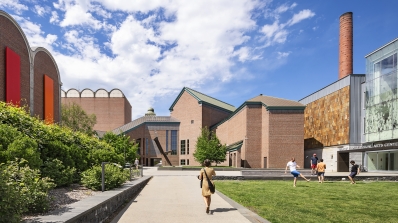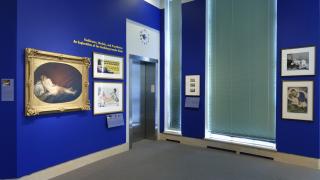Exhibitions Archive
Life in the city is lived in daily patterns of mobility. Each day, most of us stroll past the same shops and cafés, or distractedly gaze across receding rooftops from the vantage of an elevated train. We often think of time spent in transit as lost time, life on the periphery of real living. But as the French anthropologist Marc Augé has shown us, traveling through the city is a practice of history and memory. Instead of life lost, cities unfold at the stop-and-go pace of a crowded bus line. Along the way, monuments to the city’s collective history spark personal, individualized memories. In those fleeting moments, as the bus rolls along, we may be struck by the memory of a childhood trip to Central Park or suddenly recall a moment of heartbreaking loss. On the commute, the past and the present intermingle in barely recognized flashes of illumination, all in the time it takes to glance up from the morning newspaper.
Journeys along the Tokaido Highway
A Feast for the Eyes and a Sacred Trek for the FeetAn Exploration of the Reclining Female Nude
Goddesses, Models, & ProstitutesTension and Flow
Water WaysWorks by Victor Ekpuk
Auto-GraphicsUkara cloth symbolizes the power, wealth, and prestige of the Ekpe secret society, an interethnic all-male association, and the sacrality of Ekpe meeting lodges. Although commissioned and used by the Ekpe, located in the Cross River region at the border of southeastern Nigeria and western Cameroon, ukara is designed, sewn, and dyed by the Ezillo people in present-day Ebonyi State. The process of creating ukara cloths is laborious and involves many hands, but ultimately each cloth is highly individualized, clearly produced to be worn by a specific Ekpe person or to mark a particular Ekpe lodge. Nsibidi symbols, an ideographic and gestural system of communication, are dyed onto the cloth. The symbols’ meanings are largely guarded by Ekpe members, with more established members becoming deeply knowledgeable about the poly-semantic signs.


